





 |

The Democratic Socialist Republic of Sri Lanka is extensively contaminated by mines and explosive remnants of war (ERW). Most (70%) of contamination is in the north, the focus of three decades of armed conflict between the government and the Liberation Tamil Tigers of Eelam (LTTE), which ended in May 2009. The mine and UXO threat inhibits resettlement of displaced people. Total contamination estimates have fallen significantly from 506km2 at the end of 2010 to 25.8km2 as of mid 2018.
Much of the densest remaining mined areas lie in northern Sri Lanka. Both sides made extensive use of mines, including belts of P4 Mk I and Mk II blast antipersonnel mines laid by the Sri Lanka Army (SLA), and long defensive lines with a mixture of mines and improvised explosive devices (IEDs) laid by the LTTE.
Operators have encountered a wide range of LTTE devices, including antipersonnel mines with anti-tilt and anti-lift mechanisms, and often containing a larger explosive charge (up to 140g) than government-laid mines (30g). They also encountered tripwire-activated Claymore-type mines, and, though to a lesser extent, antivehicle mines.
The US Humanitarian Demining Research and Development (HD R&D) Program has deployed five technologies for operational field evaluation to Sri Lanka; the Handheld Standoff Mine Detection System (HSTAMIDS), Light Soil Sifter and Wet Soil Bucket with The HALO Trust; and the Improved Backhoe and REX multi-tool reach-in platform with the Mines Advisory Group (MAG). These technologies have been used to clear 20,719 mines and 1,554 items of unexploded ordnance from 2,390,989 square meters of land to date.
Sources: To Walk the Earth in Safety, 2023
Landmine Monitor Report, 2020
|
|
IMPROVED BACKHOE |
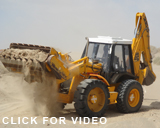
|
The Improved Backhoe is a modified commercial backhoe that incorporates a variety of commercial off-the-shelf attachments used for vegetation reduction and soil sifting in mine suspect areas. The vehicle has been modified by armoring the cab and chassis, and adding blast proof SETCO tires capable of withstanding multiple anti-personnel mine detonations. Among the attachments, the Rotar sifting bucket can safely collect, sift, and separate mines and other debris from mine suspected soil. Distribution Statement A: Approved for public release.




PARTNERS: Mines Advisory Group - Sri Lanka
|
|
REX |
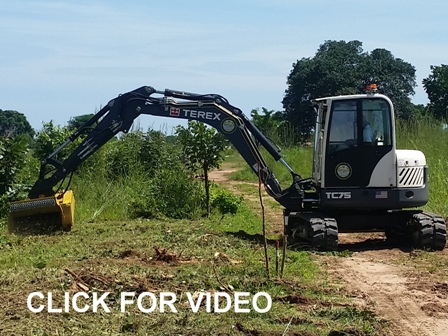
|
Remote controlled excavators are sometimes required when it is too dangerous for manual operation. The Rex is a versatile, light weight (8 ton class) armored excavator designed to clear vegetation, obstacles, and mechanically remove and neutralize anti-personnel (AP) landmines and unexploded ordnance (UXO). The HD R&D Program developed and integrated two important modifications to the commercial Terex TC75 excavator to create the Rex. These are the addition of remote control capability, and armor protection for the operator when the system is manually operated. Small platform based system advantages are lightweight, versatile and fuel efficient.
Distribution Statement A: Approved for public release.



PARTNERS: Mines Advisory Group - Angola, Cambodia (2011-2014), Sri Lanka; The HALO Trust - Sri Lanka
|
|
Multi-tool Attachments |
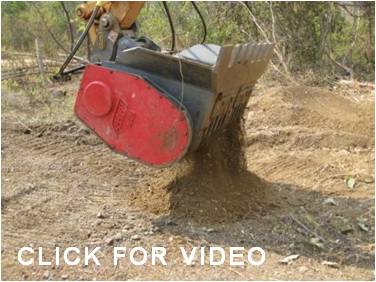
|
The Humanitarian Demining Research and Development (HD R&D) Program has developed a wide variety of excavator and loader based tools for mechanical mine clearance. These attachments give deminers the capability to perform area preparation, technical survey and mine clearance from a safe area. Tools that have proven useful include vegetation cutters, grapples, tillers, and buckets for sifting, grinding, and crushing. The HD R&D Program has modified several small, medium and large class excavators with armor protection and the interfaces needed to use these tools in various demining environments. Operational Field Evaluations (OFE) can be performed with HD R&D Program developed excavators or loaders, or with just the tools mounted to the demining organization`s own host equipment.
Distribution Statement A: Approved for public release.



PARTNERS: Mines Advisory Group; Golden West Humanitarian Foundation; The HALO Trust
|
|
HSTAMIDS |
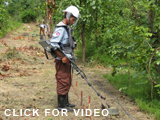
|
The Handheld Standoff Mine Detection System (HSTAMIDS) is the U.S. Army`s AN/PSS-14 dual sensor, handheld mine detector that combines an electromagnetic induction sensor and ground penetrating radar (GPR) to detect landmines. The addition of the GPR significantly reduces the detector`s false alarm rate and the time the operator spends investigating clutter, increasing the operator`s speed and effectiveness. The HD R&D program also developed the HSTAMIDS F3S variant which incorporates a more sensitive metal detector to improve performance against deeply buried low metal anti-personnel and anti-tank mines.
Distribution Statement A: Approved for public release.



PARTNERS: The Halo Trust in Afghanistan, Cambodia, Mozambique (2012-2014), Kosovo,Sri Lanka and Zimbabwe; Mines Advisory Group in Angloa and Cambodia; Cambodia Mine Action Centre (2009-2010); Norwegian Peoples Aid in Zimbabwe (2014-2016)
|
|
Light Soil Sifter |
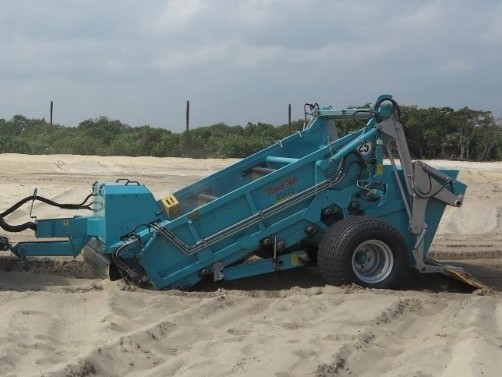
|
The light/sandy soil sifting project is evaluating the feasibility and operational suitability of using commercial beach-cleaning technologies to remove mines and clutter from sandy and mechanically prepared soils. Demining applications envisioned for these systems are removal of mines from sandy and other light soils, raking surface soil to collect clutter, and assisting with inspection and quality assurance behind mechanical clearance equipment. Distribution Statement A: Approved for public release.


PARTNERS: The HALO Trust - Sri Lanka
|
|
    
|
|

